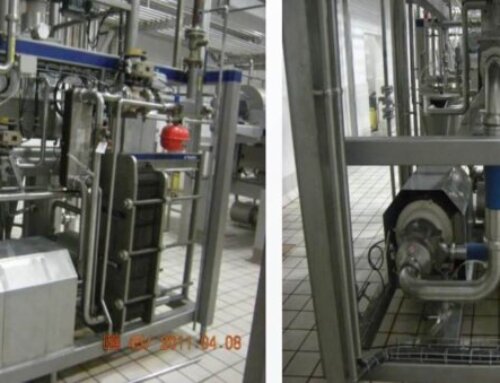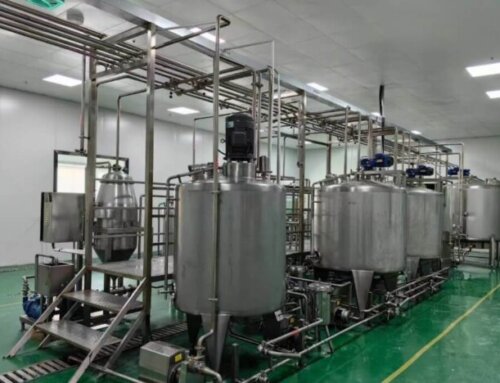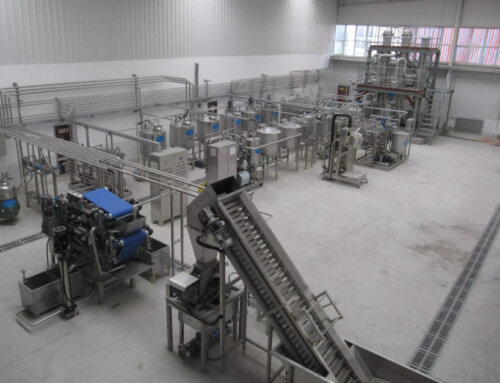Fruits and vegetables are the main raw materials for the production of fruit and vegetable juice beverages. The technological flowchart of fruit and vegetable juices processing line depends largely on the chemical composition of the fruit and vegetable raw materials. To obtain high-quality fruit and vegetable juice beverages, it is necessary to understand the chemical components of fruits and vegetables and the changes in the chemical components of fruit and vegetables during the processing, so as to more targeted control of the production process.
Generally, the chemical components in fruits and vegetables are divided into water and dry matter:
I. The water content in fruits and vegetables is generally 70%-90%, including free water and bound water (colloid-bound water).
II. Dry matter includes water-soluble and water-insoluble substances:
—water-soluble substances mainly include sugar, organic acids, pectin, tannin, etc.
—Insoluble substances include cellulose, hemicellulose, protopectin, and starch.
—Other ingredients in fruits and vegetables include vitamins, pigments, nitrogen-containing substances, and aromatic substances.
Carbohydrate
The main ingredient in the dry matter of fruits and vegetables is carbohydrates, which are mainly divided into two categories:
—-One is soluble sugars such as sucrose, glucose and fructose; Sugars are mainly divided into monosaccharides and polysaccharides: monosaccharides are mainly glucose and fructose, polysaccharides mainly refer to sucrose. Kernel fruit and berry fruits are dominated by monosaccharides, and stone fruits are dominated by polysaccharides. The sugar content in fruits and vegetables has a great relationship with the sweetness and color of fruit and vegetable processing. For example, watermelon has high sugar content. When processing watermelon juice, we can appropriately reduce the addition of sucrose according to this characteristic.
—–The other is macromolecular carbohydrates such as starch, cellulose and hemicellulose Vegetarian, pectin, etc. In fruit and vegetable juice beverages, the most important polysaccharide substance is pectin. Since pectin is a high molecular substance, when fruit juice is squeezed, if there is a large amount of pectin, it will be difficult to produce juice due to the viscosity of the juice, which will affect the juice yield; When producing clear juice, it is necessary to destroy the protective effect of pectin on suspended solids; when producing cloudy juice, pectin is required as a stabilizer to prevent the precipitation of suspended particles.

Organic Acid
The organic acid is an important flavor substance that constitutes fruits and vegetables. The amount of acid content not only directly affects the taste, but also affects the conditions in the production process of beverage juice. The main organic acids in fruits and vegetables are malic acid, citric acid, tartaric acid and acetic acid.
During the processing of fruit and vegetable juice, free acids in fruits and vegetables can inhibit the growth of microorganisms. For acidic beverages with a pH value below 4.6, the process conditions of heat sterilization during processing can be appropriately reduced, thereby reducing the loss of nutrients in juice and improving the quality of beverages.
Vitamin
Vitamins are the most important nutrients for fruits and vegetables. Most fruits and vegetables are rich in vitamin C, and also contain an appropriate amount of water-soluble B vitamins. During the processing of fruit and vegetable juices, oxygen and heating have the greatest impact on the vitamin content of the fruit and vegetable juices.

Nitrogen Compounds
The nitrogen content of fresh fruits and vegetables includes protein and amino acids, generally between 0.2%-1.2%. Due to the presence of amino acids in fruit and vegetable processing, Maillard reactions are likely to occur. The method of adding sulfite is usually used to prevent non-enzymatic browning. Due to the presence of protein, coagulation and precipitation will occur in the processing of fruits and vegetables, which will affect the quality of fruit and vegetable juices.
Minerals
Minerals in fruits and vegetables are one of the important sources of minerals for human body intake. For the human body, most fruits and vegetables are alkaline foods. Mineral elements are related to oxidation, turbidity, browning, and vitamin C loss.

Aromatic substance
The aromatic substances of fruits and vegetables are various volatile aromatic components formed during the ripening process of fruits and vegetables. For example, citrus aromatic substances are mainly citric acid, with lemon flavor; tomato aromatic substances are mainly ethanol, acetic acid and propyl ester. In concentrated orange juice processing machinery, our evaporator can be equipped with an aroma recovery system according to client requirements.

pigment
Pigments in fruits and vegetables mainly include carotenoids and chlorophyll. Carotenoids are mainly found in tomatoes, watermelons, pumpkins, peppers, peaches, plums and carrots. Carotenoids are not easy to be destroyed during the processing of fruits and vegetables, but they are easy to oxidation under the influence of light and cause the discoloration of fruits and vegetables. Chlorophyll mainly exists in green vegetables, and it will also oxidize under the influence of light.
Tannin substance
Tannin has astringent and plays an important role in the flavor of fruit and vegetable juices. During the processing of fruits and vegetables, if the tannin-containing fruits and vegetables are not handled properly, they will cause different degrees of color change. In addition, adding tannin and gelatin to the juice can also clarify the juice.

Enzyme
There are various enzymes in fruits and vegetables, such as pectinesterase (PE) and polygalacturonase (PG). These enzymes have an important role in the maturation of fruits and vegetables, as well as various effects on the production of fruit and vegetable beverages. When making concentrated juice, it is often necessary to treat the pectinase in fruits and vegetables with a tubular preheater to inhibit or destroy the enzyme activity. For example, in the processing of tomato paste, heat treatment at 60°C and 15S, the PE activity is reduced to 1/5, while heating conditions at 85°C and 15S can completely inactivate the enzyme.




